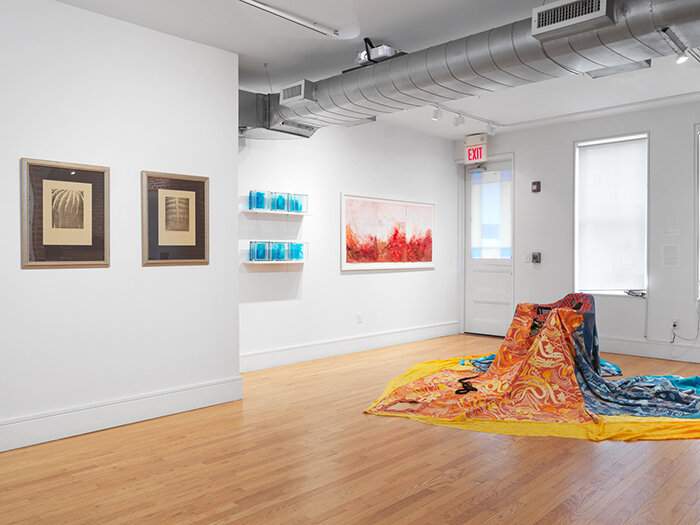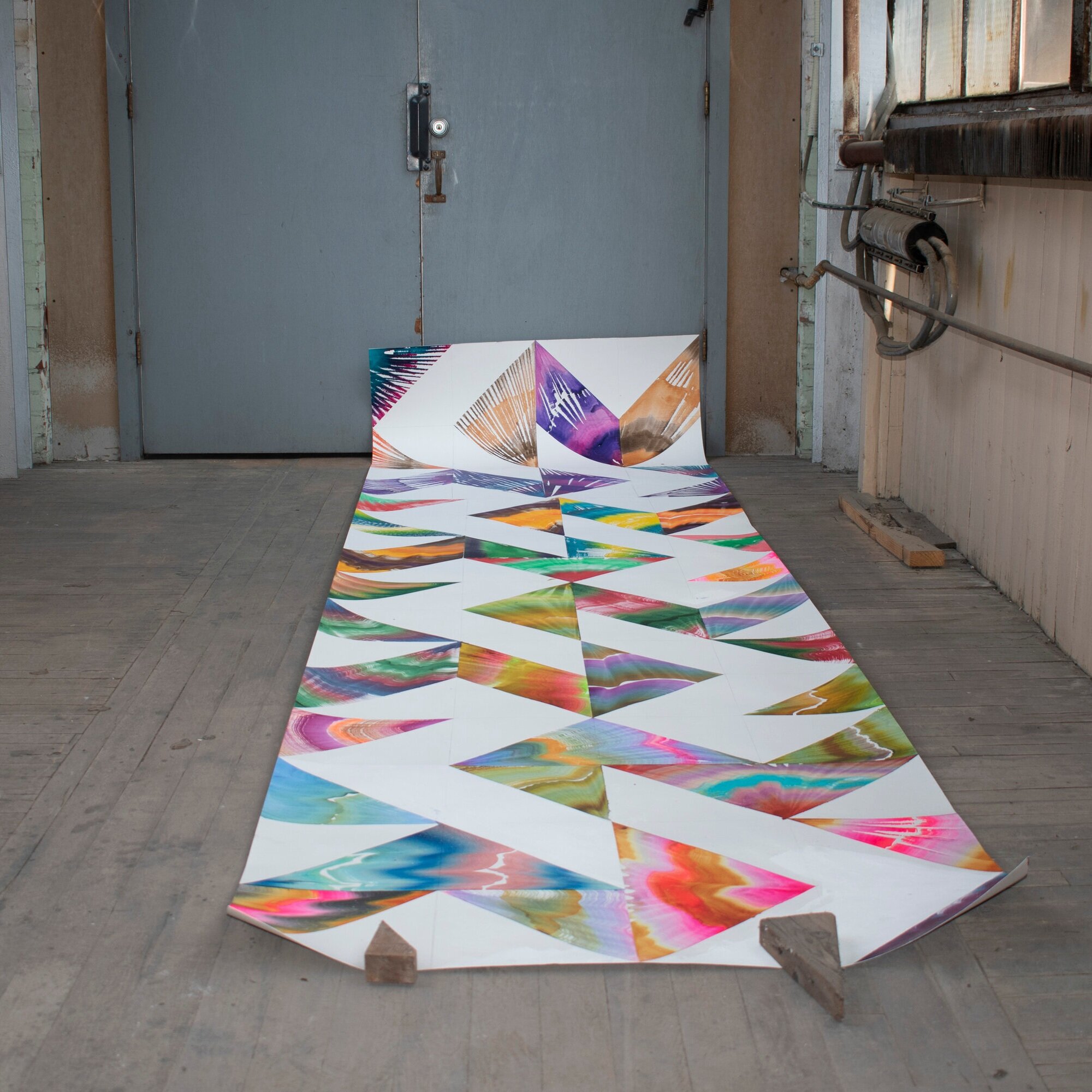Review | Roots & Roads
Review | Roots & Roads
Franklin Street Works
Feb 8 – May 17, 2020
Installation view of Roots & Roads. Courtesy Franklin Street Works.
In the group exhibition, Roots & Roads, curator Anita N. Bateman accentuates one aspect of Black culture—hair—as a visual and symbolic means to explore assimilation and estrangement. The show’s premise pays homage to the African practice of braiding seeds and rice into their own hair and the hair of their children as a way to prepare for the unknown during the transatlantic slave trade. Through a range of media spanning video, photography, and performance works, over a dozen emerging artists consider how Black identities have been repressed, exploited, and alternately, liberated by cultural expressions rooted in Black hair.
The title evokes notions of hair and land, while the theme of dislocation undergirds both. Inside the central gallery, the first works collected for this show—two of Nafis White’s photogravure prints from the series, Roots & Rows (2017–present)—focus on the intricacies of braiding. The plait’s abstract patterns are unmistakable, though the images have been cropped so tightly that other indications of the figure are excluded. The isolated braiding becomes an art form and the elaborate networks of interlacing rows recall aerial views of cornfields from which the term “cornrows” was derived. Beyond this connection, White’s prints exude the warmth and love that come from the effort and self-care that are necessary for this manifestation of beauty.
Installation view of Roots & Roads. Courtesy Franklin Street Works.
Downstairs, a video by Adama Delphine Fawundu covers a large wall, while Southern trap music and Mende chants fill the room. In the cleanse (2017), Fawundu recites excerpts from a vast pool—Christian scripture, the Quran, Alice Walker, and Toni Morrison, among others—as she bathes her hair with water, milk, and what appears to be blood. With pieces of cotton placed within her hair, Fawundu performs a spiritual cleansing, rife with allusions to her Mende heritage while drawing inspiration from other contemporary sources.
The other artists of Roots and Roads contribute to the crux of the rich show, neither a simple celebration nor an educational provision for non-Black audiences. Bateman’s explicit intention is to bring Black artists together, tracing the diverse—at times, convergent—roads of their roots to the present.
Installation view of Roots & Roads. Courtesy Franklin Street Works.






